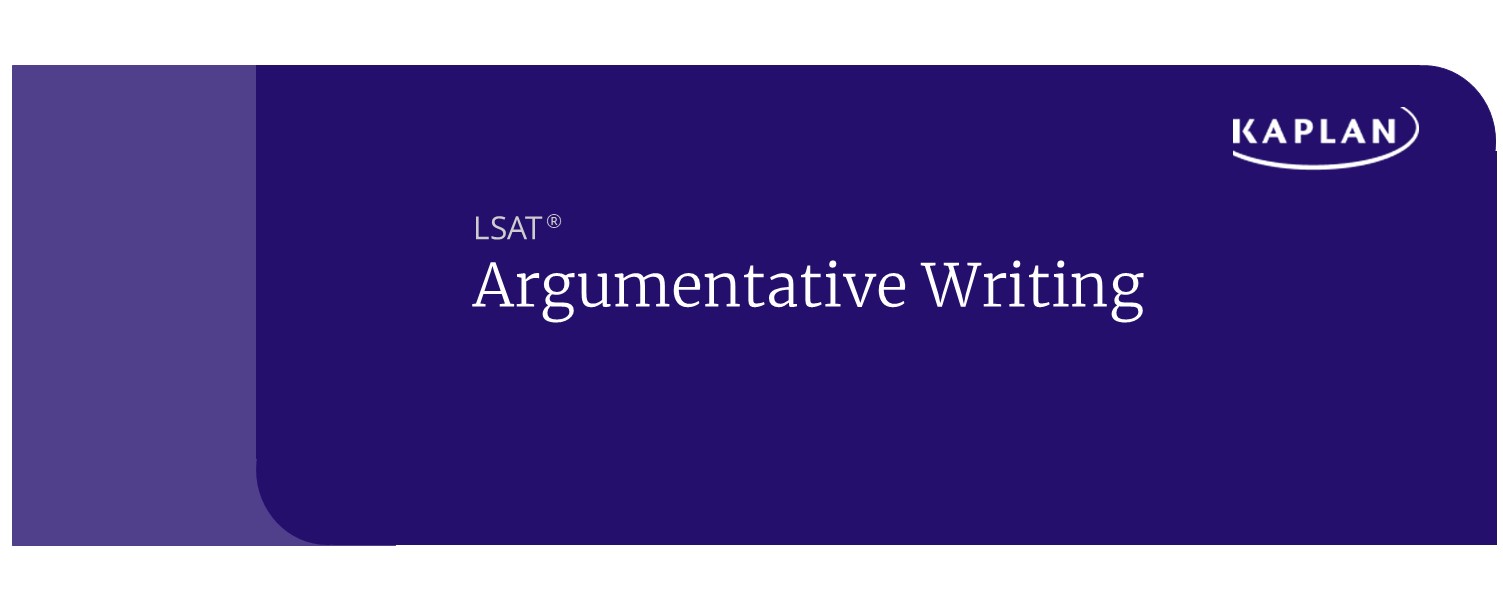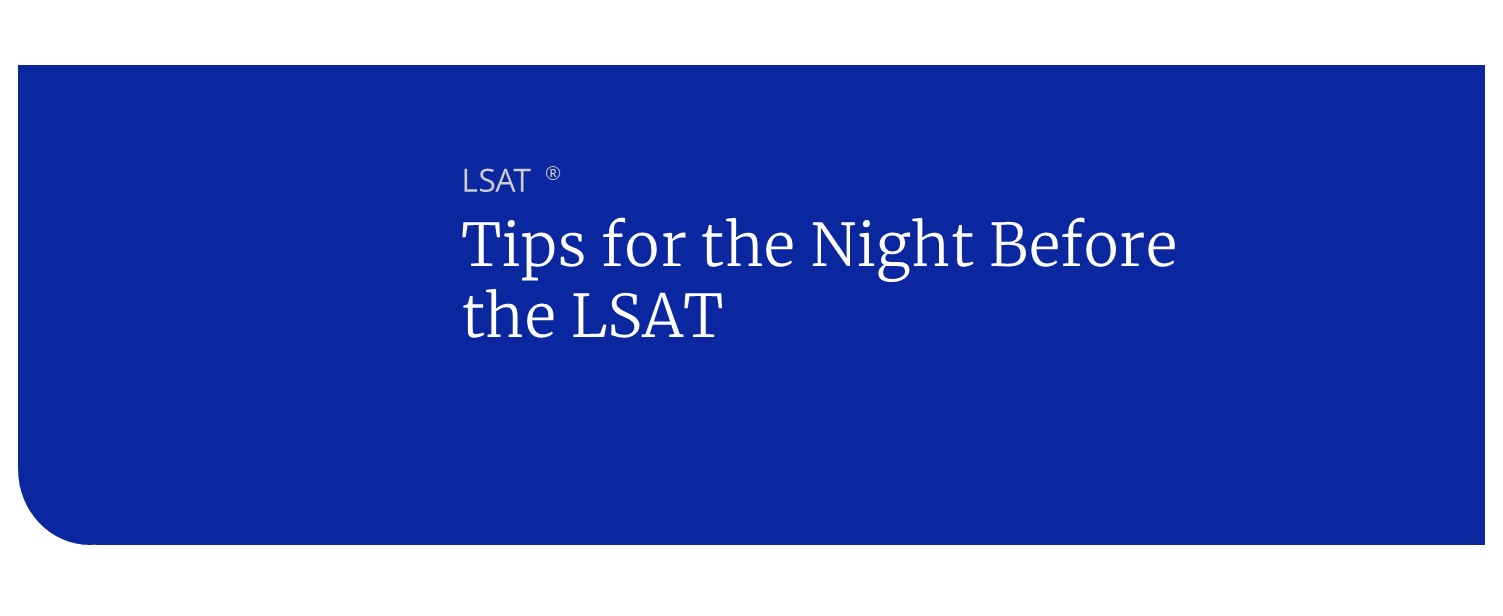What’s Tested on the LSAT?
The Law School Admissions Test (LSAT) is the standardized test you have to take in order to apply to, and be accepted at, a law school in the United States and Canada. It test takes approximately half of one day and is administered nine times per year, typically across most months of the calendar year. As with any standardized test you have to register early and pay a fee. Sign up to take the LSAT, and find a testing location in your area.
The LSAT Test Sections
The LSAT consists of four multiple-choice sections: two scored Logical Reasoning sections, one scored Reading Comprehension section, and one unscored “experimental” section that will look exactly like one of the other multiple-choice sections. These four multiple-choice sections can appear in any order on Test Day. A short break will come between the second and third sections of the test. There is also an unscored, 50-minute LSAT Writing essay that you will complete online at any time up to one year after your official test date.
| lsat section | # of questions | testing time |
|---|---|---|
| Logical Reasoning | 24–26 | 35 minutes |
| Logical Reasoning | 24–26 | 35 minutes |
| Reading Comprehension | 26–28 | 35 minutes |
| Experimental Section | 24–28 | 35 minutes |
| LSAT Argumentative Writing | Written Response | 50 minutes |
LSAT Logical Reasoning
Both Logical Reasoning sections consist of 24–26 questions based on short passages, which we’ll call stimuli, of around two to five sentences each. Each stimulus may be a short argument or a series of statements of fact or opinion. Each stimulus will have one corresponding question that tests your ability to do such things as spot the structure of arguments, identify assumptions and flaws, strengthen or weaken arguments, or find inferences.
Logical Reasoning rewards you for analyzing arguments to strengthen or weaken them or to identify their assumptions and flaws. Other Logical Reasoning questions require you to draw valid inferences from a set of facts.
LSAT Reading Comprehension
This section consists of three passages, typically made up of two to five paragraphs—about 500 words apiece— and one set of paired passages, together about the same length as each of the three single passages. Each passage is accompanied by anywhere from five to eight questions. The Reading Comprehension section has 26 –28 questions. Reading Comprehension on the LSAT is an exercise in reading for structure and for multiple points of view. You’ll learn to trace the outline of the passage as you read and to distinguish the author’s viewpoint from the viewpoints of others mentioned in the passage, as well as to stay a step ahead of where the author is going by reading predictively.
Reading Comprehension questions reward you for identifying the author’s purpose and main idea, drawing valid inferences from the passage, and determining how and why the author uses certain details.
LSAT Experimental Section
The experimental section is an additional, unscored section of Logical Reasoning or Reading Comprehension. You will not know what type of experimental section you will get, and it can show up anywhere, including after the break. You’ll have to bring your A-game for the entire test, as there is no reliable way to determine which section is experimental while you’re taking the test. In case you’re wondering, the LSAC includes an experimental section on the LSAT as a way to test questions for future administrations of the exam.
Remember that no matter which type of unscored section you encounter on test day (standard experimental or new question research), your three scored sections will be identical to those seen by all test takers in your administration. Don’t try to guess which format you have during the exam; doing so is distracting and unproductive. Do your best on each section you see. If you have a traditional experimental section, you won’t know during your test which section is experimental. If you happen to be in the cohort receiving the brand-new items, you’ll find out after Section 3.
LSAT Writing
You’ll have 15 minutes for prewriting analysis using guided questions and a digital notetaking tool, followed by 35 minutes to write your LSAT essay. The Argumentative Writing section is unscored and is administered online and on-demand via secure proctoring software. In this section you will be tasked to analyze a decision-based prompt and argue for one of two possible options using the provided facts.
Try Some Free LSAT Practice Questions
Four Core Skills – What the LSAT Tests
There are four key skills that the LSAT tests.
LSAT Skill 1: Reading Strategically
Reading for structure and staying ahead of the author (anticipating) is what Strategic Reading is all about. Both your law professors and the LSAT want you to cut through the jargon and explain what the case or passage says. Reading strategically helps you zero in on exactly what opinions are present and how that knowledge will be rewarded in the question set.
LSAT Skill 2: Analyzing Arguments
The essence of Logical Reasoning and the essence of lawyering is Analyzing Arguments. To analyze an argument in the LSAT sense, you must distinguish the argument’s conclusion from its evidence. Then, determine what the person making the argument is taking for granted. The assumptions made are what allow you to strengthen or challenge arguments on the LSAT. Likewise, in a courtroom, attorneys will need to understand, analyze, evaluate, manipulate, and draw conclusions from the arguments of their opponent, their own clients, and the judge.
LSAT Skill 3: Understanding Formal Logic
Conditional, or If/Then statements, are incredibly important in rules of law. “If/Thens” tell you what must, can, or can’t be true in a given situation or when a particular rule is or isn’t applicable. For a lot of students, this is the most intimidating of the Core Skills, but facing up to it is incredibly valuable. It brings a rigor to your reasoning that will allow you to answer questions—on the LSAT and in law school—with confidence and precision.
LSAT Skill 4: Making Deductions
Making a deduction on the LSAT involves deriving a conclusion that must be true based solely on the information provided in the stimulus. It’s like putting puzzle pieces together: you use the given statements (premises) to arrive at a new piece of information (conclusion) that fits logically.
Here’s how it works and how it applies to Logical Reasoning:
Identify the premises: Carefully read the stimulus and pinpoint the factual statements or rules provided. These are your starting points.
Look for relationships: Analyze how the premises connect or relate to each other. Do they share common terms? Do they establish conditions or limitations?
Draw a conclusion: Based on the relationships between the premises, determine what new information must be true. This conclusion should be directly supported by the premises without any assumptions or outside knowledge.
By mastering the skill of making deductions, you can effectively analyze arguments, identify assumptions, and evaluate the strength of conclusions, all of which are essential for success on the LSAT Logical Reasoning sections.
[ PREVIOUS: 7 Preparation Tips for the LSAT ]
[ NEXT: Formal Logic: Necessary vs. Sufficient ]






